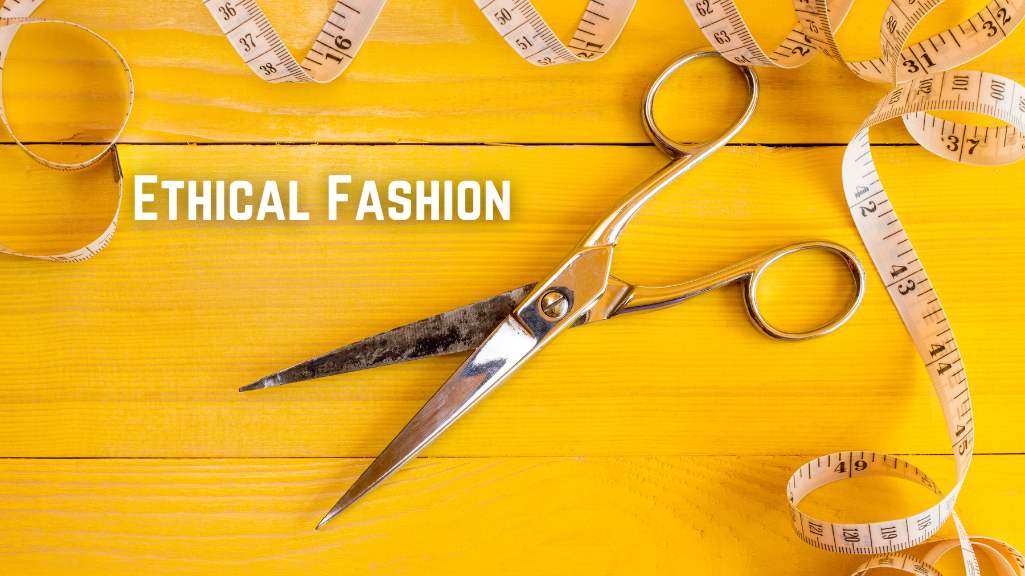Creating a Sustainable Future: The Power of Ethical Standards in the Fashion Industry
Vikash Jain
. 3 min read
According to one definition, "ethical fashion" refers to any type of clothing that makes an effort to minimize its harmful effects on people, animals, and the environment. Design, human labor, and raw materials are the three components that go into the making of an article of clothing. Additionally, with the advancement of technology, online platforms like omegle chat provide opportunities for individuals to engage in meaningful conversations about ethical fashion, exchange ideas, and share insights on sustainable practices within the fashion industry. These chat platforms serve as a space for like-minded individuals to connect, educate, and inspire each other towards making more conscious fashion choices and supporting ethical fashion brands.

Concerns Relating to Morality in the Fashion Industry
Unsafe and Uncomfortable Working Conditions
The vast majority of clothing that is sold every day is manufactured in third world countries, often under conditions that are harsh and hazardous. The fire at the garment factory Tazreen Fashion and the collapse of the Rana Plaza factory in Bangladesh were just the tip of the iceberg when it came to the dangers faced by garment workers. Together, these two major incidents resulted in the deaths of more than 1,200 garment workers.
Poor Pay Rates
The fashion industry believes that they are responsible for the creation of employment opportunities in countries that are considered to be in the second or third world. As a result of this belief, the fashion industry's so-called sweatshops continue to benefit from the lives of their employees regardless of whether or not those employees are paid wages that are sufficient to support themselves.
Counterfeiting of Famous Brands
The brand name is the primary selling point of many different fashionable accessories. The price of a Gucci bag can be many times higher than the price of an identical bag produced by a competitor. Forgers take advantage of this fact by manufacturing low-quality knockoffs and illegally attaching the names of prestigious and expensive fashion houses to their bogus products.
Impact of the Fashion Industry on the Environment
One tenth of all of the water that is used in the manufacturing industry to keep factories running and to clean products is consumed by the fashion industry. To put this into perspective for you, the production of one kilogram of cotton requires 10,000 liters of water, while the production of one cotton shirt requires approximately 3,000 liters of water.
Animal Cruelty
The amount of cruelty that is inflicted on animals as part of the fashion industry is one of the disturbing aspects of this industry. When you are wearing one of your most treasured items, it is extremely unlikely that you will give any thought to how it made its way into your wardrobe. These farms have a wealth of heartbreaking tales to tell, and they demand that immediate action be taken to put an end to the cruelty that is inflicted upon the animals.
How to Ensure the Fashion Industry Continues to Uphold Ethical Standards
Demand For Sustainable Fashion
The term "fast and toxic fashion" refers to trendy clothing and accessories that are produced at a high rate of turnover at a low cost in order to maximize profit and satisfy consumer demand. These garments are produced with no regard for human labor, the health of the environment, or the amount of waste produced. For years, this has been the standard practice, and customers haven't batted an eye.
Environmental Considerations
Construct your manufacturing facilities in areas that are free of endangered species, and where it is feasible, repair and develop the land that has been damaged.
Make sure that manufacturing facilities adhere to the highest possible social and environmental standards:
- If it is geographically and politically feasible, power with renewable sources of energy.
- Maintain compliance with local environmental regulations, and raise them to the highest possible level if they are not already there.
- Make use of dyes and detergents that are not toxic.
- In order to prevent microfibers from entering waterways, catchment systems should be installed.
Conclusion
In conclusion, the fashion industry has a responsibility to uphold ethical standards in order to minimize its harmful effects on people, animals, and the environment. The industry must address concerns such as unsafe working conditions, poor pay rates, counterfeiting, animal cruelty, and the environmental impact of production. Consumers can demand sustainable fashion and support companies that prioritize ethical practices.
More Stories from
The Timeless Elegance of Blazers for Weddings: A Perfect Choice for Grooms
Explore the allure of blazers for weddings in this article, as we delve into their features, styling options, and why they have become a favored choice among discerning grooms.
Embracing a Modern Lifestyle: The Intersection of Fashion and Personal Style
Explore how our choices and routines shape our fashion preferences and uncover the ways in which fashion serves as a means of self-expression.
Finding the Perfect Engagement Ring: Style and Affordability Unite
This article offers valuable insights on how to choose a stylish and affordable ring that complements your partner's taste and fits your budget.
Fashion Blogging: Unleashing Your Style and Creativity Online
Discover the rise of fashion blogging, its powerful influence on the fashion industry, and how to start your own blog.
The Timeless Elegance of Sarees for Weddings: A Guide for Brides and Guests
Whether you're a bride or a guest, this article provides valuable insights to help you make the perfect choice for your next wedding celebration.









.png?width=40&aspect_ratio=1:1)
